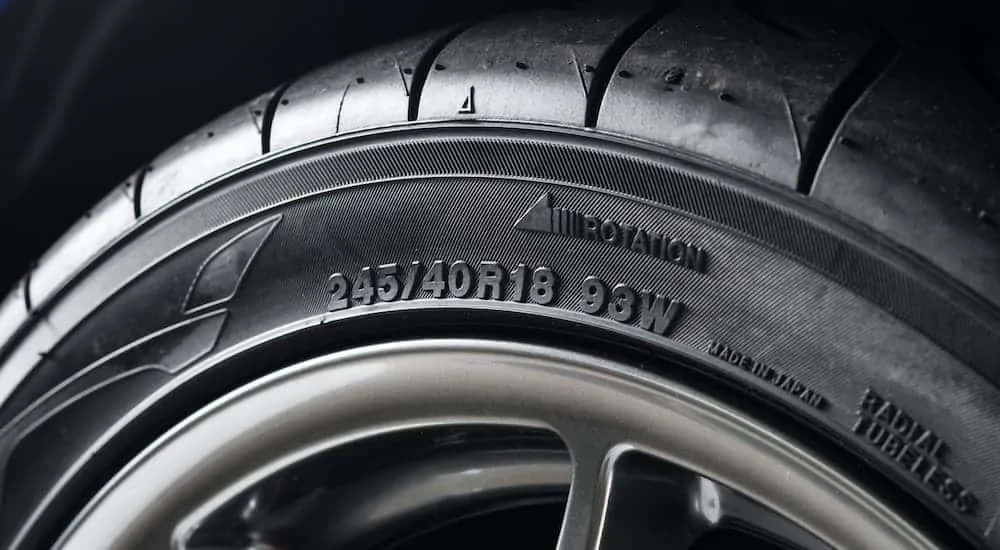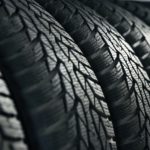No matter what time of year it is, your on-road safety depends on the state of your vehicle’s tires. Tire shopping is not limited to holiday sales or summer vacations: your vehicle needs dependable tires all year long. Whether you have the equipment needed to change your tires at home on your own or whether you need to find somebody trustworthy to swap out your tires for you, the odds are good you’ll be performing the search query “tire shop near me” sometime within the next few months. So what do you need to know to make sure that you can choose the best set of tires for your needs?
There are a few simple things you can do to help ensure you’re prepared for tire shopping. Simple knowledge such as learning how to read a tire sidewall or knowing what type of tire you need for your circumstances are good places to start. Having a good idea of what tire brands are quality and what tire brands are garbage is also good knowledge to have, although, with today’s safety standards and warranties, this is less of an issue for most situations.
How to Read a Tire Sidewall
The tire sidewall is the part located directly between the treads and the wheel, facing out towards you when the tire is on the car. There are a lot of numbers and letters covering the sidewall of a tire, and while they might seem overwhelming, learning how to read a tire sidewall is the best way to know a tire’s details. This gives you a better idea of what kind of replacement tires you should be asking your local tire shop for and what sort of tires they have for sale.
All tire sidewalls follow a certain standard, and the current standard that tire manufacturers in America follow is known as the P-Metric Sidewall Code. Any tire made after 1977 will reflect this P-Metric sidewall code standard and will look something like “P200/60R16.” This is the single most important piece of information on a tire sidewall as it tells you the dimensions of the tire.
Almost every sidewall code will begin with either a letter P for “passenger vehicle” or LT for “light truck.” While LT is not officially part of the P-Metric standard, tires with the code LT are built to US standards, just like P-Metric tires beginning with the letter P . If your tire’s sidewall does not start with a letter, this may indicate that the tire was built according to European standards.
Right after the letters P or LT, you will find a triple-digit number. This number indicates the width of your tire across the treads in millimeters. Generally, a wider tire will give you more traction on good roads, while a narrower tire will perform better in rain and snow. However, choosing something too small or too wide may not fit on your car. Sticking with the factory tire width is almost always your best bet across the widest possible range of driving conditions.
Next, the tire sidewall has a slash, followed by another number. This two-digit number indicates the height of the tire’s sidewall as a percentage of the tire’s width. For example, in the case of a tire reading, “P200/60,” the tire has a width of 200 mm (roughly 7.9 inches), and the sidewall is 60% of that width high or 120 mm (roughly 4.7 inches). However, a tire marked “P220/60” will have a sidewall measuring 132 mm (roughly 5.2 inches) because even though the ratio is the same, the tire is wider. Getting the wrong aspect ratio means your speedometer will be inaccurate, and the tire may not even fit on your car. This sounds complex, I know, but the aspect ratio calculations are not something you need to worry about unless you are changing your tire width or wheel size. Generally, a lower aspect ratio will give you sharper handling, while a higher aspect ratio will improve comfort.
Following your tire’s aspect ratio, you will find another letter that describes your tire’s internal composition. This letter merely indicates the direction of your tire’s plies. You won’t be able to see this composition because it is all on the inside of your tire, but the direction of the plies will have an effect on your tire’s grip, fuel mileage, and even driver comfort. Most tires follow the industry standard of R for radial, but sometimes you will come across a tire with a D or X for diagonal plies. Diagonal ply tires are often used on motorcycles or trailers.
Finally, there is another two-digit number. This number describes the diameter of the wheel the tire can be mounted on, measured in inches. This number has to match your existing tires unless you are planning on buying new wheels as well. Note that wheel size is independent of tire diameter. Off-road vehicles will generally have very large tires for wheel size, while sports cars will usually have very large wheels for their tire diameter. Moving to a smaller wheel will usually increase comfort while a larger wheel will improve street performance.
There are also load index, speed rating, and manufacturing date indicators. Deciphering the first two of these is not as straightforward as reading tire dimensions as they are merely numbers and letters that reference industry-standard classifications. However, if you don’t have the appropriate charts at hand, remember that the load index goes up with higher numbers, and the speed rating goes up the later the letter is in the alphabet. Checking the tire date is also important as tires do go bad over time. A date indicator is a four-digit number following the letters “DOT” – the first two digits indicate the week it was made, while the second two digits indicate the year.
Wrap Up
Hopefully, this brief look into reading a tire’s sidewall was useful to you. Don’t feel like you have to memorize all of this information before you go tire shopping. Your nearby tire shop will have experts who know what all of these symbols mean and what they do for your tire. However, it is still a good idea to know a little about what these letters and numbers mean so that when you are asked what tire options you would prefer, you can come up with an informed answer.
When you are unsure what tire options your vehicle is suited for, you can consult your vehicle’s user manual to determine the most recommended tires. Occasionally, a tire brand will also be recommended in your vehicle’s user manual, but not always. Alternately, if your tire shop has an internet shopping feature, you can pull up your vehicle’s make and model, and it will show you all of that vehicle’s optional recommended tires.
Now all that’s left to do is decide if you want snow tires, summer tires, or all-season tires, and this is usually determined by the time of year as well as the area in which you live. However, this complex topic will be covered at another time. Again, most nearby tire shops will have knowledgeable and friendly experts ready to answer all of your tire questions.






